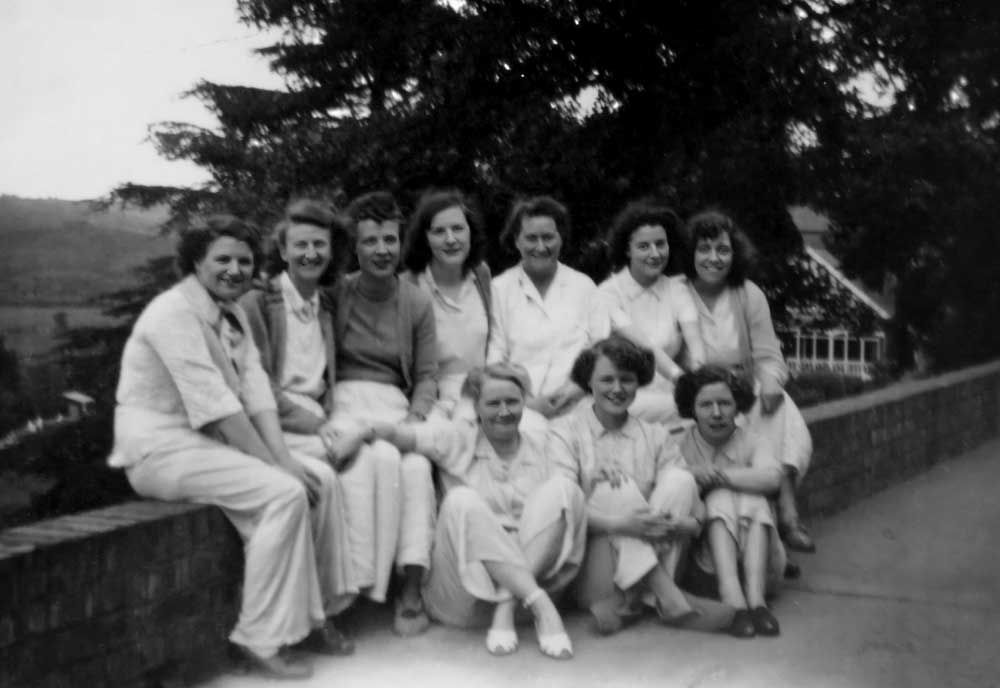 |
Here is a photo of some of the ladies who were patients at Knightwick Sanatorium - recovering from TB (Many thanks to Robin Taylor, for photos from his mothers collection) Robin's mother, Joan (Fletcher) Taylor can be seen sitting on the wall second from the right. Joan stayed at the Sanatorium for 5 years of her life, had operations to move a lung and it was the development of the antibiotic streptomycin, in 1946 that eventually gave her an effective treatment and cure for TB. Having battled all this she lived for 88 years and died recently on the 9th August 2017.
They were probably all staying in the chalets opposite where they are sat, along this terrace. When the Sanatorium closed and became the Sunningdale Estate, family's who had become homeless occupied them and I used to deliver the Sunday papers to them.
KNIGHTWICK SANATORIUM.
This month marks the centenary of the official opening of the former "Sanatorium for consumptives" at Knightwick.
The Journal of November 1902 carried a lengthy account of the ceremony where Countess Beauchamp of Madresfield Court, Malvern, opened what was then one of the first sanatoria in Britain for the treatment of TB sufferers.
It was seen as a desperately needed facility in the uphill battle against the scourge of tuberculosis which had claimed the lives of no fewer than 3,000 men, women and children in Worcestershire alone during the previous 10 years.
The Journal of 1902 explained how the Knightwick Sanatorium had become a reality. Mr J. Dangerfield had "generously leased the substantial house and extensive grounds at Knightwick to the Sanatorium Committee at a purely nominal rent of £1 a year," while Dr Dixey of Malvern had spearheaded a fund-raising campaign to meet the £2,400 cost of building two wings and shelters for TB patients.
John Corbett, the famous Droitwich "Salt King" had given £1,000 towards this fund.
The Journal had this description of the new sanatorium: "Its situation at a height of 300 feet above sea level and above the fog line is considered by medical men to be ideal for the purpose. The grounds give a most pleasant prospect of the Teme Valley to such as may be in a state of health to need treatment there.
"Along the front of each of the bedroom shelters is a spacious verandah where the patients may recline throughout, enjoying the benefits of a maximum amount of sunshine and the crystal clear air. Dr Parkinson has been installed as resident medical officer, and Miss Hope as matron."
The sanatorium became a 100-bed unit and was to be involved in the development of new treatments for TB. Berrow's Journal for this week of 1952 reported the Golden Jubilee of Knightwick Sanatorium and the celebrations laid on to mark the event but, as we know with the benefit of hindsight, it closed down in 1963 after giving six decades of sterling service in the effective fight to largely eradicate TB.
[Worcester Evening News, 22nd November, 2002.]
©peh

